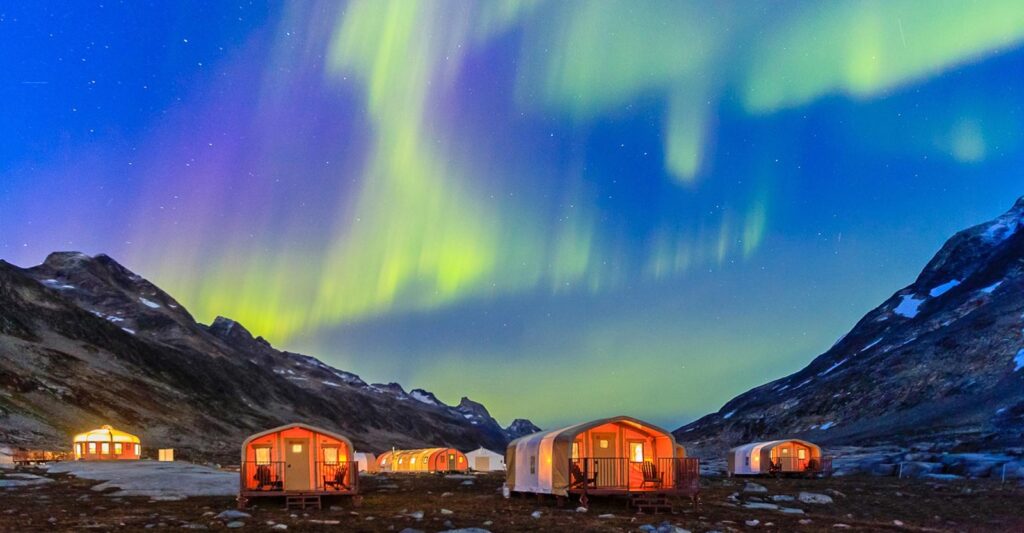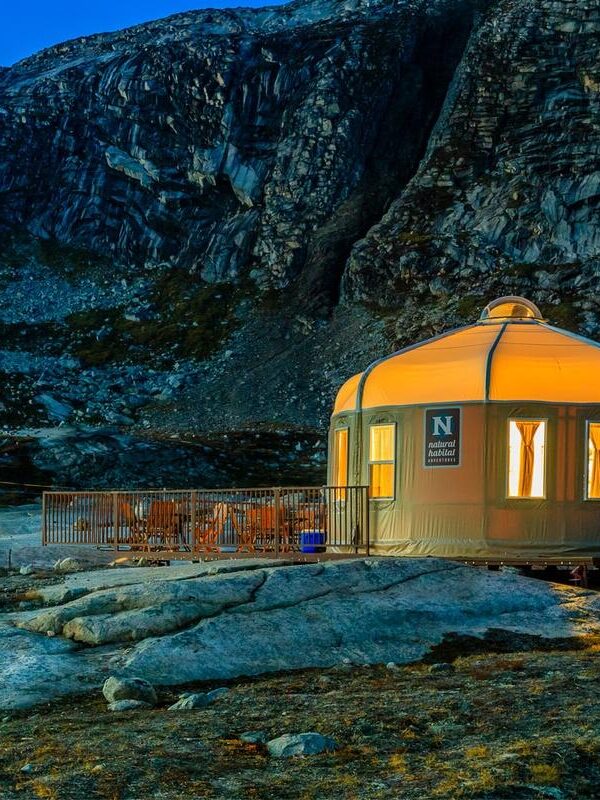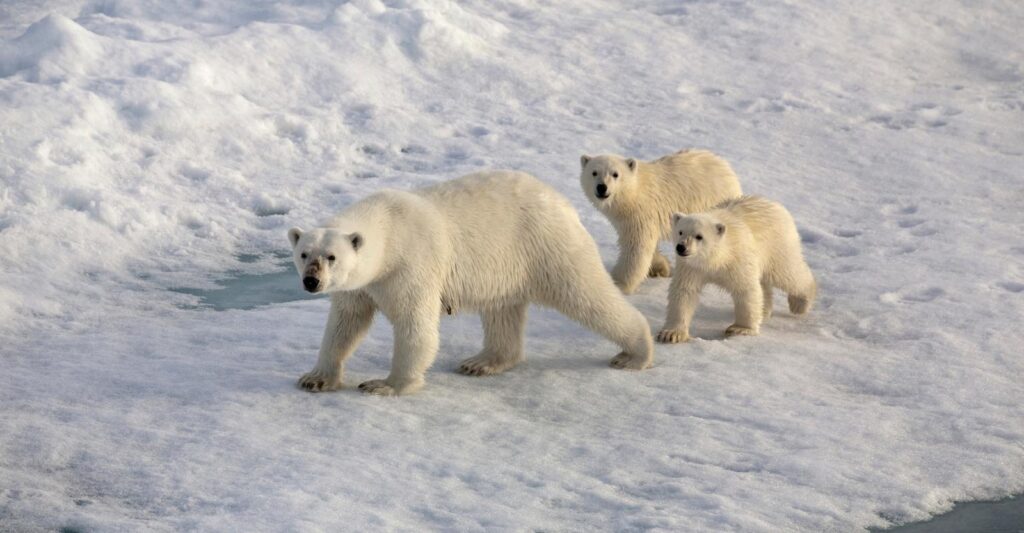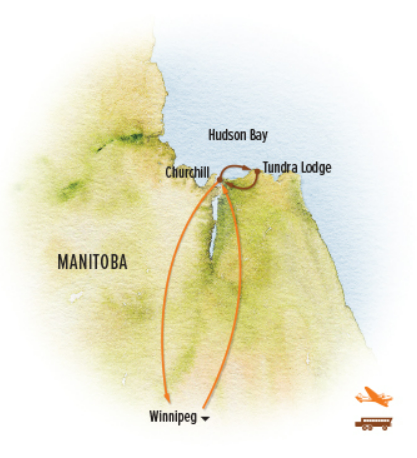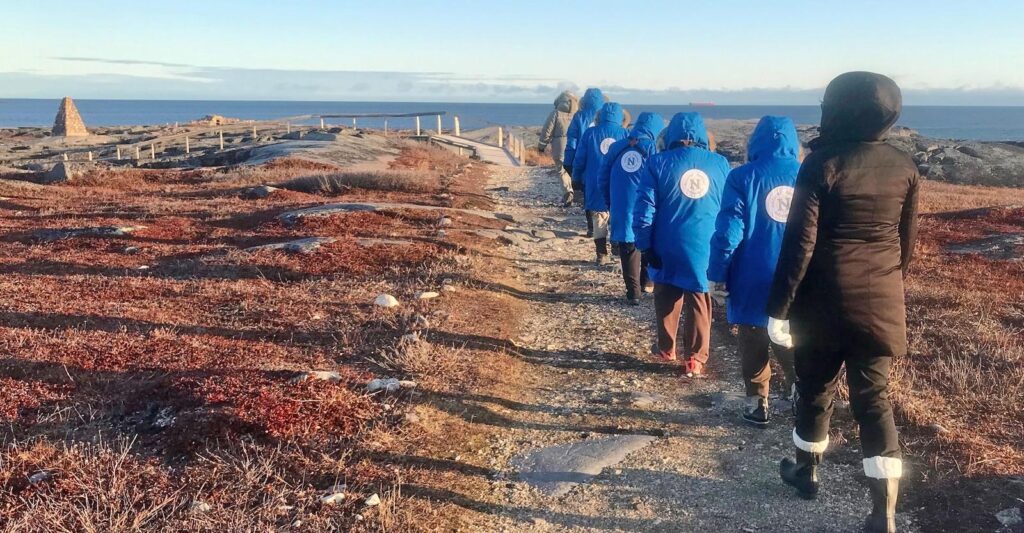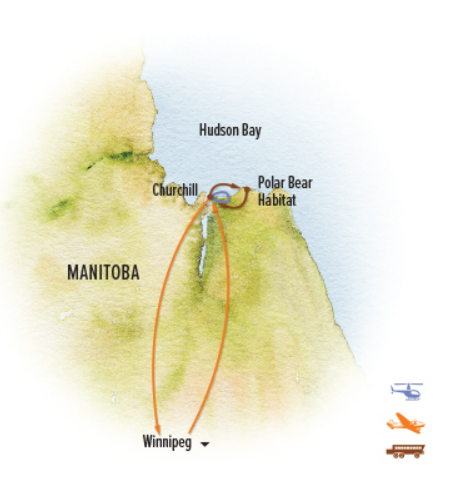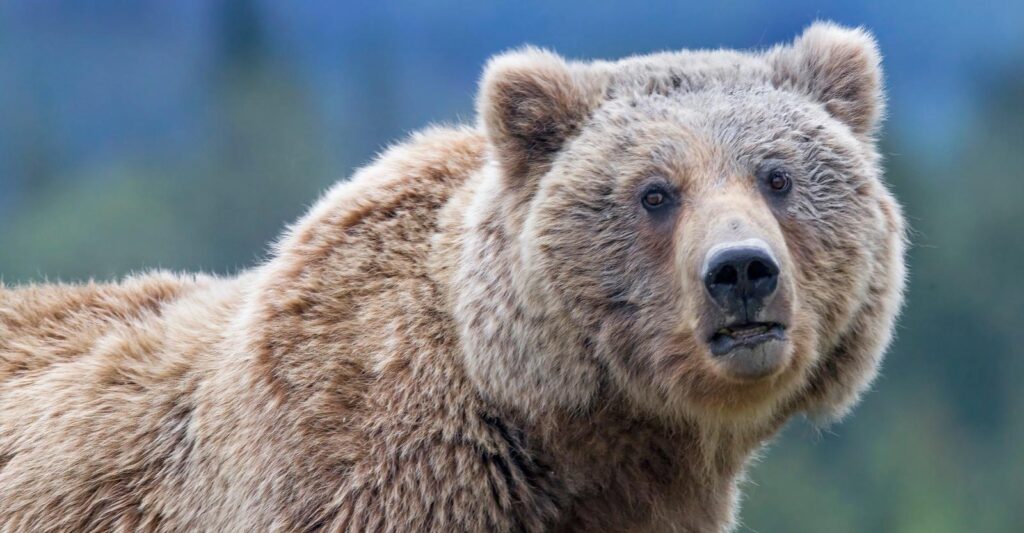Overview
As technology shrinks our planet and its farthest reaches become more accessible, novel adventures are ever rarer. But that’s what you’ll find at Base Camp Greenland, our deluxe safari-style camp near the edge of the Greenland ice sheet. In East Greenland, one of the most isolated places on Earth, we are immersed in raw Arctic beauty while staying in surprising comfort. Summer here is glorious! ![]() Miniature wildflowers dot the tundra, and by early autumn, lowbush blueberries and crowberries ripen as dwarf birch turns gold. Whales frequent the fjord, while icebergs, spawned from massive glaciers, glitter in the late sunset light. Beneath granite peaks that tower over deep inlets, we find stunning hiking and kayaking. Nothing compares to East Greenland for an epic Arctic expedition—and there’s no better way to experience it than from our wilderness base camp!
Miniature wildflowers dot the tundra, and by early autumn, lowbush blueberries and crowberries ripen as dwarf birch turns gold. Whales frequent the fjord, while icebergs, spawned from massive glaciers, glitter in the late sunset light. Beneath granite peaks that tower over deep inlets, we find stunning hiking and kayaking. Nothing compares to East Greenland for an epic Arctic expedition—and there’s no better way to experience it than from our wilderness base camp!
Trip Highlights
- Exclusive Access to Remote East Greenland Most visitors go to Greenland's populated west side, but our focus is on the wild, virtually uninhabited and rarely visited east coast, where silence and solitude reign
- Stay at Our Deluxe Arctic Safari-Style Camp Enjoy exceptional comfort at our private wilderness camp in view of the Greenland ice sheet, monumental peaks and seals bobbing in the bay
- Diverse Daily Adventures on Land & Sea Explore fjords and islands by boat, helicopter, kayak and hikes; learn about climate change among melting glaciers; and meet local Inuit residents
Itinerary
Please fill out the form below to request a quote for rates.
Included
- Trip price includes: Accommodations, services of Nat Hab's professional Expedition Leaders, local guides and camp staff, all meals from dinner on Day 1 through breakfast on Day 10, select beer and wine at camp, some gratuities, airport transfers for those arriving by air on Day 1 and departing by air from Keflavik on final day, private whale watching tour, gear including Mustang expedition suits for Zodiac excursions and all kayaking equipment, all activities and entrance fees, all taxes, permits and service fees.
- Internal air includes: Round-trip flights between Reykjavik, Iceland and Kulusuk, Greenland, and a helicopter flight between Kulusuk and Tasiilaq (this will be listed separately on our invoicing).
Not Included
- Travel to and from the start and end point of your trip, some alcoholic beverages, some gratuities, passport and visa fees (if any), optional activities, items of a personal nature (phone calls, laundry and internet, etc.), airline baggage fees, airport and departure taxes (if any), required medical evacuation insurance, optional travel protection insurance.
Map

